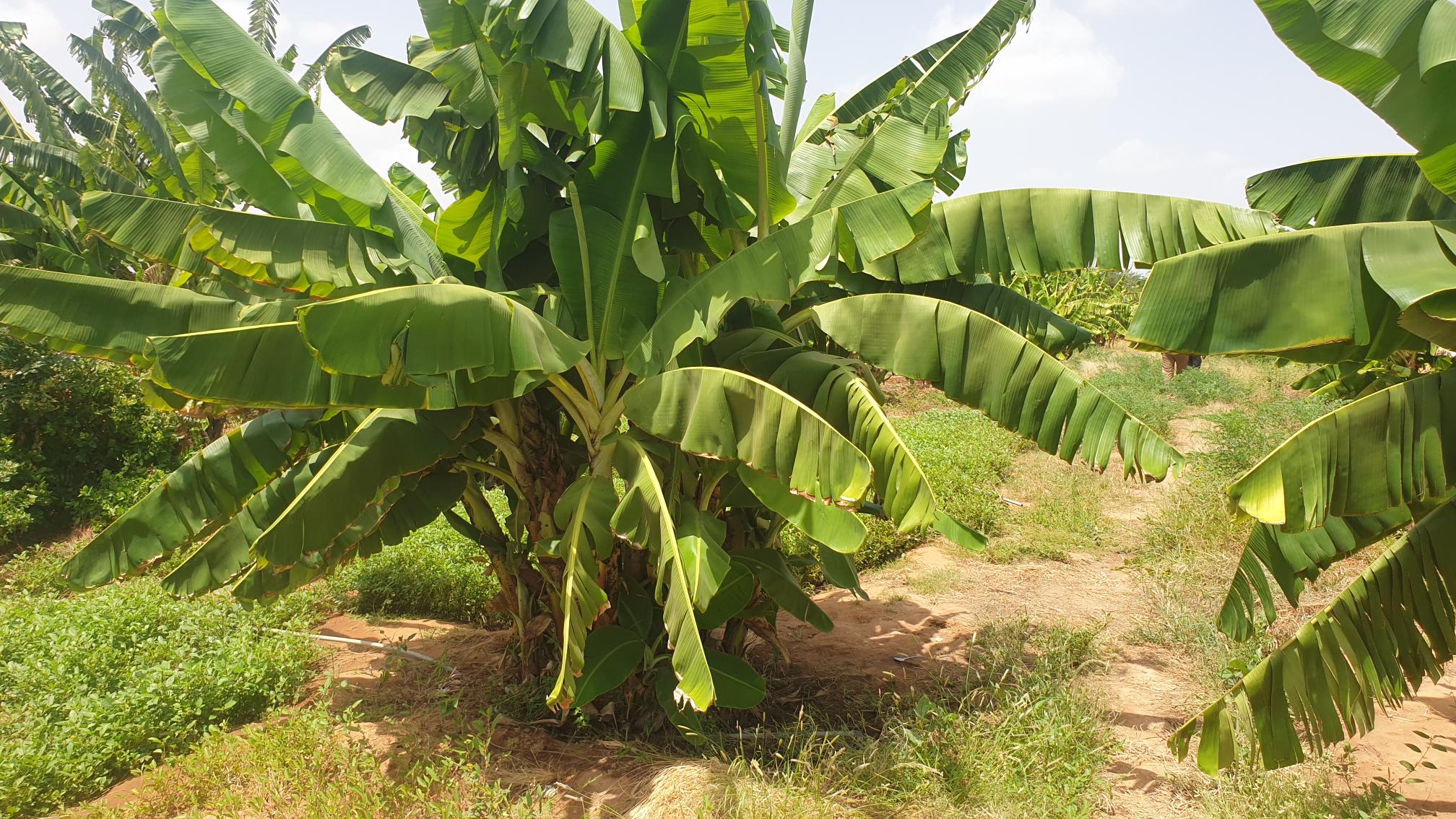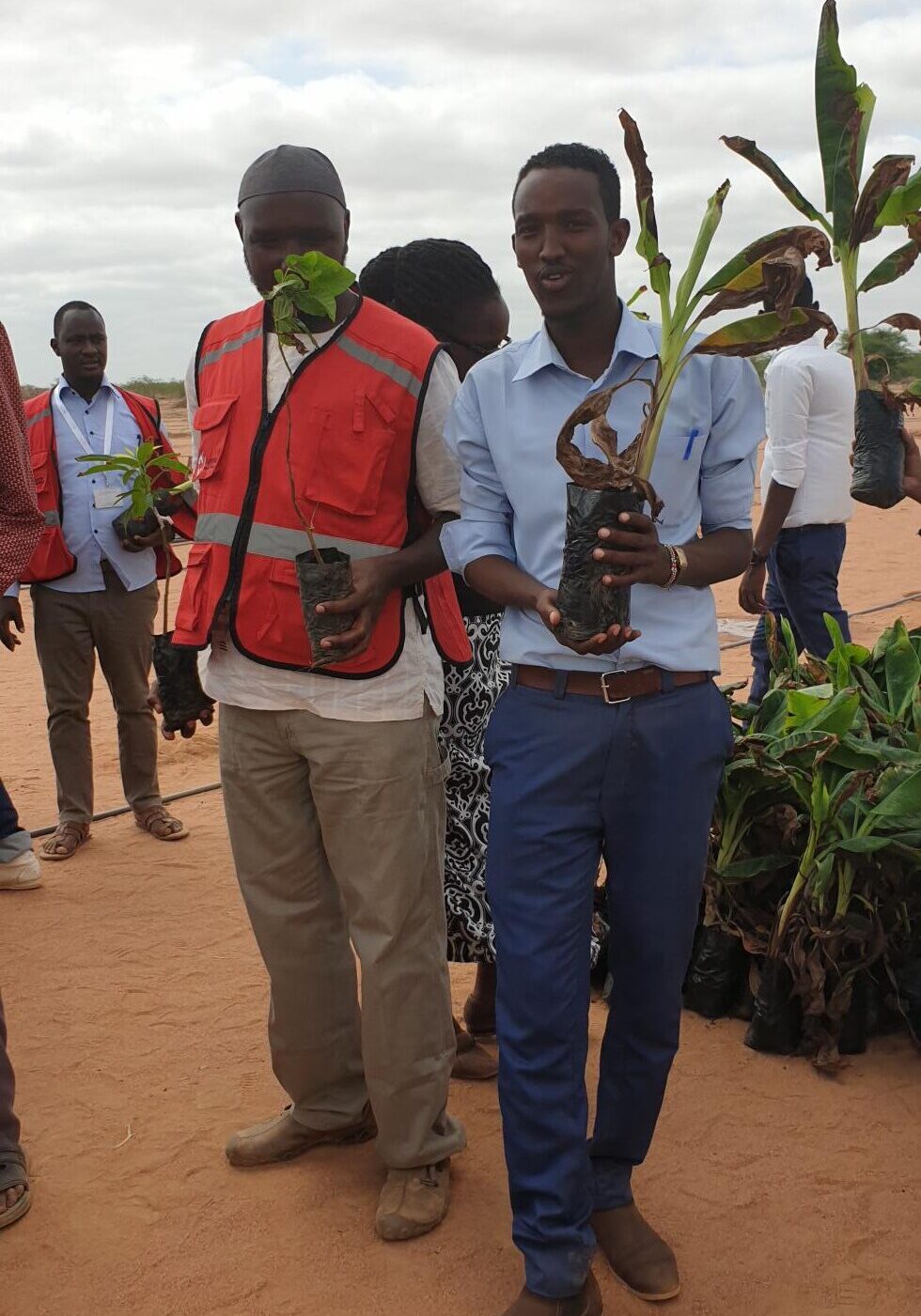Green belts for drought recovery and food security in Dadaab refugee camp in Kenya

Hazard: Drought
Solution: Land rehabilitation
High-level results: Five green belts have been restored, increasing forest cover by over 70 hectares, protecting the community from drought impacts
The 2011/12 Horn of Africa drought damaged the land surrounding the Dadaab refugee camp and resulted in an influx of refugees, contributing to increased land clearing and removal of the windbreak function provided by trees and shrubs.
The Dadaab refugee camp is in Garissa county, a semi-arid area in North-Eastern Kenya, prone to soil erosion and drought. The growth in the camp’s population led to an increase in land clearing, including for firewood. This resulted in a loss of the windbreak function provided by trees and shrubs, leading to dust and exposure of the population to respiratory diseases. The situation was exacerbated during the 2011/12 Horn of Africa drought, which led to a sharp influx of refugees from the region, in addition to also impacting the land around Dadaab. As a result, the need for land rehabilitation was identified as a priority for the camp.

Recognising this, Kenya Red Cross supported a land rehabilitation project to provide livelihoods and support drought recovery, with strong community involvement.
The project involved the creation of green belts surrounding the camp. The project began with a feasibility study to identify which tree varieties to use on the degraded land. indigenous trees were selected, given their adaptability to the local arid conditions. The trees were planted and actively managed for two years, after which the green belts naturally regenerated without needing management and irrigation. Local communities in the camp were strongly involved in implementing the project. Community members, who were nearest the land allocated for green belts, were made responsible for maintaining the afforested and reforested areas, and received a stipend for their activities. Government agencies and UNHCR, the UN Refugee Agency, also supported the project implementation. For example, government agencies provided technical advice and ensured the initiative supported government plans and programmes. This included providing technical guidance for agricultural officers within the camp and at the sub-county level.
The project has rehabilitated five green belts, supporting drought recovery.
This has led to an increase in forest cover of 104 hectares from the green belts and 70 hectares from indigenous trees, reducing disaster-induced material losses to land, crops and livestock from drought. The project has restored the land to such a level that wild animals can return to their habitat. The green belts also provide protective functions from sand and winds.
The project also utilized engineered irrigation methods to support crop production for livelihood and food security needs, with these co-benefits encouraging community acceptance of the project.
During project implementation, livelihood and food security needs were rapidly identified as related priorities for the communities. As a result, the project explored agroforestry to combine indigenous trees with fruit trees and vegetable crops in the green belts. This included providing ongoing irrigation to the orchards, such as drip irrigation, solar-powered boreholes and water pans. A total of 3 hectares of orchards have been created. The produce from the agroforestry has been used for local food, leading to an improvement in local diets and associated health benefits. Surplus produce is sold at the market, providing an additional income for families and strengthening their livelihoods. Produce has also been sold to the local hospital. The provision of these short-term co-benefits has incentivized community engagement in the project.



